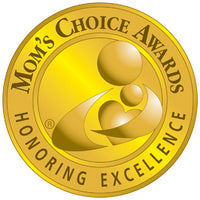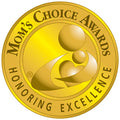How to Create a Healthy Sleep Routine for Your Baby

For your baby, sleep is as crucial as proper nutrition for their development. And while parenthood is a journey with lots of questions and uncertainties, every parent would agree that knowing their baby is safely sleeping and getting the amount of sleep they need is the top priority.
But how? It’s not like you’re not trying, right!? Luckily, there are ways to ensure a healthy sleep routine for your little one. Read on.
Use Tools and Trackers
Why go about it the hard way when you don’t have to? Sleep trackers provide a wonderful way to help create a healthy sleep routine. In fact, if you haven’t checked out the Smart Sleep Coach App by Pampers, it’s time.
With easy sleep tracking and additional support and guidance provided by sleep and medical experts, it’s like having a sleep expert in your pocket!
The Smart Sleep Coach App allows you to:
- Track sleep. Using simple tracking tools, you can easily log your baby’s sleep to help better understand your baby’s biological sleep patterns. This is valuable information at your fingertips!
- Get personal sleep solutions. The technology within the app tunes in with your baby’s sleep clock using the information you log, giving you feedback so you can identify the ideal bedtime and naptime schedule and create a healthy sleep routine.
- Boost your confidence. Every parent knows it’s easy to doubt yourself and wonder whether you’re doing it “right”. But when you see your baby settle into a sleep routine and the wonderful benefits that come with it–a rested baby means a happier baby, and parent! - there’s no greater confidence booster.
- Grows with you. The Smart Sleep Coach App’s Power Parent training sessions and daily mini-courses equip you with what you need to know as your baby grows.
Create a Sleep-Promoting Environment
Creating a sleep-promoting environment is key to your baby getting the rest they need. Where your child sleeps, the surface they sleep on, the room’s lighting, temperature, and what your baby wears are all important factors to consider when establishing a healthy sleep routine for your baby.
Here are tips for creating a sleep-promoting environment for your baby–and you–to get a good night’s rest:
- Create a safe space. For the first year of baby’s life, the safest place to sleep is in their own crib on a flat surface, on their back. Make sure your baby’s crib meets the Consumer Product Safety Commission (CPSC) standards. Do not use blankets, comforters, bumper pads, pillows, or toys in your baby’s crib. Baby’s crib can either be in a nursery or in your room.
- Set the mood with the right lighting. Make the room as dark as possible. This includes nap times. Blackout curtains or shades are a good investment, especially if your baby’s nursery gets a lot of direct sunlight. Nightlights can be fun, but can accidentally distract or stimulate your baby when they should be settling down to sleep. Use a soft-glow night light, if needed, to provide just enough light for you to navigate the nursery without disturbing your little one.
- Adjust the temperature for sweet dreams. The optimal sleeping temperature for babies is between 68 and 72 degrees Fahrenheit. Consider adjusting your thermostat before you and your little one settle into the bedtime routine. Also, consider what your baby is wearing and dress them accordingly for a comfortable sleeping temperature. Use sleepers or a sleep sack so you don’t need a blanket to cover them.
- Tune out background noise. You’ve probably discovered that sometimes the smallest sound can startle your baby awake. Background noises can easily be tuned out with the use of soft, calming music, nature sounds, or white noise played quietly in your baby’s nursery.
- Establish a calming routine that is consistent and predictable. Be consistent with bedtimes and nap times. Also consider doing the routine (feeding, rocking, diaper change) in the same order so your baby gets the message that it’s time to start settling down to sleep.
- Invest in a monitor. Using a video monitor means you can check on your baby without disturbing them.
Give them comfort
Parents may find it difficult to get their baby to sleep in their crib. While the crib is the safest place for your little one to sleep, the reality is they prefer the comfort and coziness of your arms!
While it may be tempting to add cozy blankets, soft toys, and pillows to add warmth and comfort to your baby’s crib, it is highly recommended your baby sleeps with nothing in their crib but the mattress. Loose bedding, blankets, toys, bumper pads, and pillows increase the risk of Sudden Infant Death Syndrome (SIDS) or lead to suffocation.
Since babies cannot move objects away from their faces, disentangle themselves, or roll or push themselves up with their arms, using a wearable blanket or swaddle is the safest option.
But how can this give them comfort? In comes The Snuggy Buddy.
The Snuggy Buddy is a wearable blanket with a securely attached plush lovey, that provides babies with the comfort and safety they need. The sense of touch is scientifically proven to help your baby feel soothed, calm, and comforted while they sleep in their crib. This means they can sleep longer and better, and so can you!
The Snuggy Buddy is made of super soft and breathable Muslin fabric, with adjustable snaps to grow with your baby and zippers down each side to make nighttime diaper changes a breeze.
Attached at chest height is a plush butterfly lovey, safely secured and always within reach of your baby to help them self soothe with the comfort of a familiar toy. It’s the ultimate way to give your baby comfort and help them feel safe in their crib.
A Personal Sleep Solution
Lacking sleep is undeniably one component of being a new parent, but with budding technology and incredible products backed by science, it doesn’t have to be. The Smart Sleep Coach and the Snuggy Buddy help your little one get the sleep they need…and safely.




Leave a comment